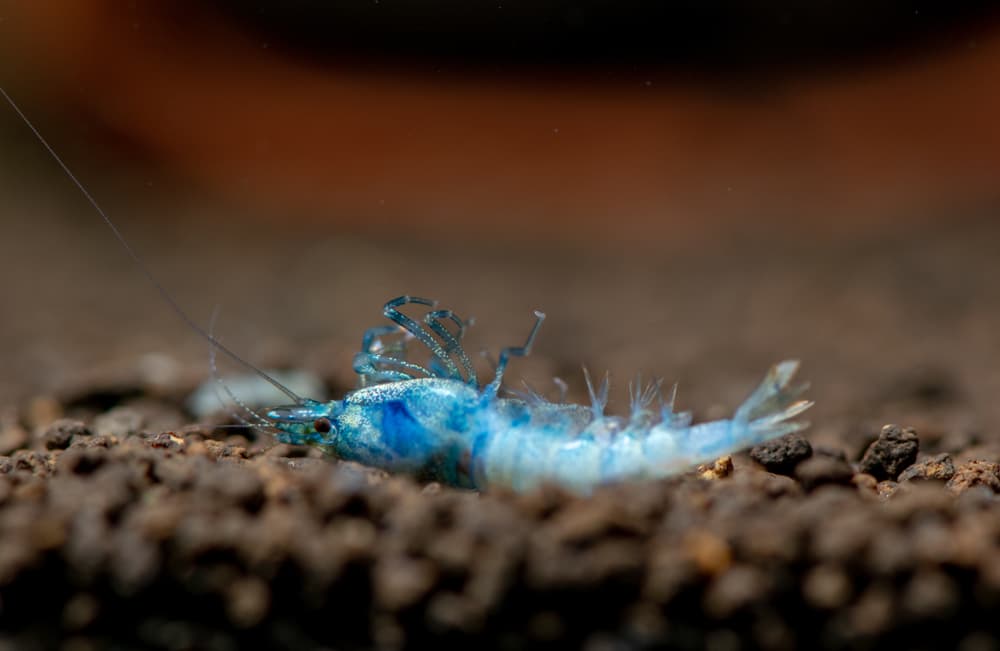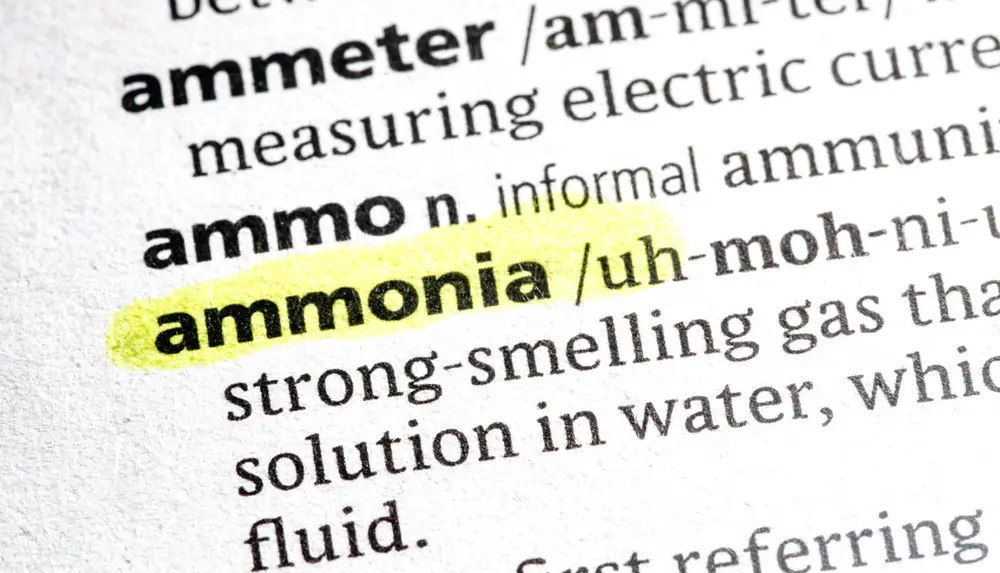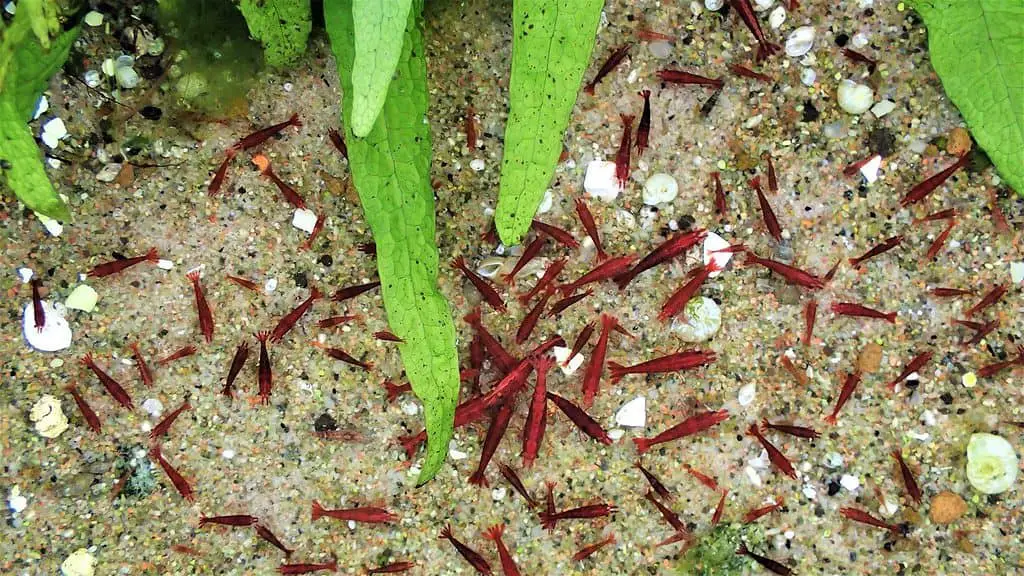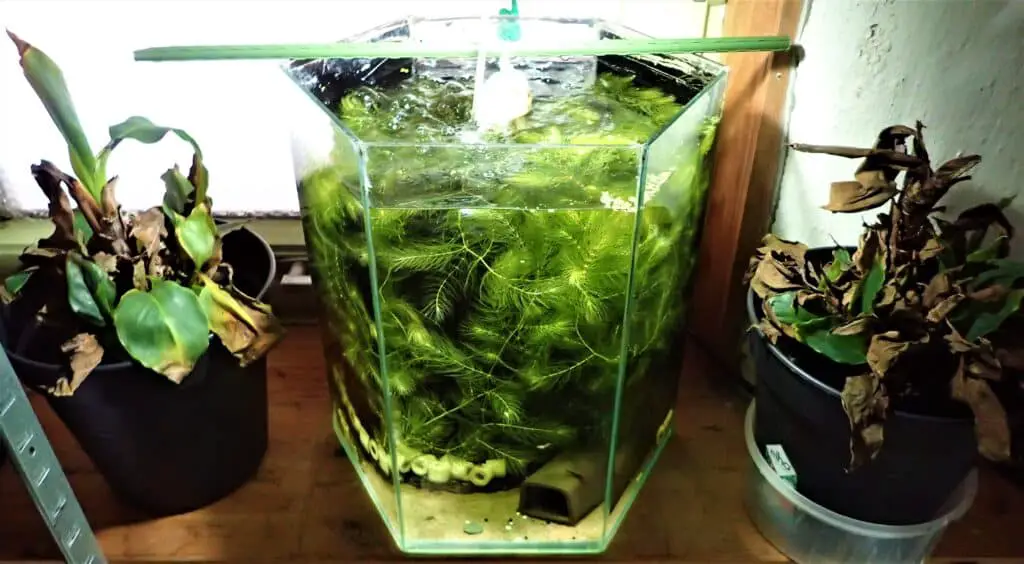Removing dead shrimp promptly from your aquarium is essential to maintain a healthy environment for the remaining colony. Decomposing shrimp can foul the water, increasing the risk of water contamination and the spread of diseases. However, the necessity and urgency to remove the dead shrimp may vary depending on certain conditions, such as the cause of death and the size of the tank.
promptly from your aquarium is essential to maintain a healthy environment for the remaining colony. Decomposing shrimp can foul the water, increasing the risk of water contamination and the spread of diseases. However, the necessity and urgency to remove the dead shrimp may vary depending on certain conditions, such as the cause of death and the size of the tank.
Hey there, fellow shrimp keepers! Over my years of shrimp keeping, I’ve learned a lot through personal experience, and I’m here to share some of that with you. You might have faced this situation before: you find a dead shrimp in your tank and are unsure what to do. Should you leave it, or should you remove it immediately? I’ve asked myself the same question many times.
After extensive research and experience, I can confidently say that removing a dead shrimp from your aquarium as quickly as possible is generally the best practice. It’s all about maintaining the health of your remaining shrimp and the overall balance of your aquarium. But why is this so important? I’m going to delve into that today, discussing the risks associated with leaving a dead shrimp in the tank and when it might be okay to do otherwise.
as quickly as possible is generally the best practice. It’s all about maintaining the health of your remaining shrimp and the overall balance of your aquarium. But why is this so important? I’m going to delve into that today, discussing the risks associated with leaving a dead shrimp in the tank and when it might be okay to do otherwise.
The Dangers of Leaving Dead Shrimp in Your Aquarium
Alright, let’s dive straight into it. The first thing you need to know is that leaving a dead shrimp in your aquarium can pose serious threats to the rest of your shrimp colony and the overall health of your aquarium. The primary dangers come in two forms: the potential for disease spread and water contamination.
is that leaving a dead shrimp in your aquarium can pose serious threats to the rest of your shrimp colony and the overall health of your aquarium. The primary dangers come in two forms: the potential for disease spread and water contamination.

How Decomposing Shrimp Affects Water Quality
Now that we’ve discussed the dangers of leaving a dead shrimp in your aquarium, let’s delve into how the decomposition process of a shrimp can impact your water quality.
When a shrimp dies , its body doesn’t just stay idle. It undergoes decomposition, a natural process where organic matter is broken down into simpler forms of matter. In the case of a shrimp in your aquarium, this process occurs relatively quickly due to the warm water conditions. While decomposition is a natural and essential process in the cycle of life, in an enclosed environment like an aquarium, it can pose a threat to your water quality.
, its body doesn’t just stay idle. It undergoes decomposition, a natural process where organic matter is broken down into simpler forms of matter. In the case of a shrimp in your aquarium, this process occurs relatively quickly due to the warm water conditions. While decomposition is a natural and essential process in the cycle of life, in an enclosed environment like an aquarium, it can pose a threat to your water quality.
The primary issue here is the release of ammonia. As the shrimp’s body breaks down, it releases significant amounts of this compound into the water. Now, if you’re new to shrimp keeping, you might be wondering why this is a problem. Ammonia, in its un-ionized form (NH3), is highly toxic to aquatic life, including shrimp.
Even low levels of ammonia can cause severe stress to your shrimp , leading to a weakened immune system and an increased risk of disease. It also interferes with the molting process by impairing the expression of chitinase enzymes. Over time, exposure to high ammonia levels can stunt your shrimp’s growth rate, reduce their feeding rates, and lower their breeding success.
, leading to a weakened immune system and an increased risk of disease. It also interferes with the molting process by impairing the expression of chitinase enzymes. Over time, exposure to high ammonia levels can stunt your shrimp’s growth rate, reduce their feeding rates, and lower their breeding success.
Another concern is that decomposing shrimp can also release other toxic byproducts like cadaverine and putrescine. Although these toxins are not released in large amounts due to the small size of shrimp compared to other aquatic animals like snails or fish, their accumulation over time can still pose a threat to the health of your shrimp colony.

The Role of Diseases in Shrimp Mortality
In the world of shrimp keeping, understanding the role diseases play in shrimp mortality is essential. It can be heartbreaking to see your once vibrant shrimp colony impacted by disease, so let’s delve into this topic.
Shrimp, like any other living creatures, are susceptible to a variety of diseases, illnesses, and parasites. These can range from bacterial infections to parasitic infestations, and even certain viral diseases. They can spread rapidly through your shrimp colony, often going undetected until significant damage has occurred.
One common disease among shrimp is the white spot disease. This disease is caused by a protozoan parasite and is identifiable by tiny white spots on the shrimp’s body. Infected shrimp often display erratic swimming behavior and a reduced appetite. If not treated promptly, white spot disease can quickly prove fatal.
Another disease of concern is the Vorticella parasite infection, which presents as tiny, white, hair-like structures on the shrimp’s body, especially near the rostrum or the “nose” area. This parasitic infection, if left untreated, can lead to the death of your shrimp.
Bacterial infections are also common causes of mortality in shrimp. These can lead to conditions like bacterial shell disease, which causes dark, eroded spots on the shrimp’s shell. Bacterial infections often thrive in poor water conditions, so regular water changes and monitoring of water parameters are essential to prevent them.
A unique disease that affects shrimp is the so-called “green fungus” or Ellobiopsidae. This disease, which is actually caused by a parasitic algae, leads to the growth of green, cauliflower-like structures on the shrimp’s body, usually under the abdomen. This disease is particularly problematic as there’s no known cure yet. Infected shrimp should be removed and isolated immediately to prevent the spread.
Importantly, if a shrimp dies due to a disease and the body is left in the tank, it can lead to the rapid spread of the disease to other members of the colony. This is why quick removal of a dead shrimp is so crucial.
Understanding these diseases and their role in shrimp mortality is an essential part of being a responsible shrimp keeper. It allows us to take swift action when signs of disease appear, safeguarding the health and well-being of our cherished shrimp colonies.

Ammonia Levels: A Silent Threat to Your Shrimp Colony
In the realm of shrimp keeping, ammonia levels often lurk as a silent but potent threat to your cherished shrimp colony. Understanding and managing ammonia levels is a crucial aspect of maintaining a healthy aquarium environment. Let’s explore this topic in detail.
Ammonia is a colorless gas that, in an aquarium setting, can be produced from several sources. One significant source is the decomposition of organic matter, such as uneaten food, plant debris, and sadly, dead shrimp. Another source is from the waste produced by your shrimp and other inhabitants of your tank.
In its un-ionized form, ammonia (NH3) is extremely toxic to shrimp. Even low levels can stress your shrimp, leading to a weakened immune system and an increased risk of disease. Exposure to high levels of ammonia can interfere with molting, reduce the growth rate of your shrimp, and even lead to their death.
Here’s where things get a little complex: the toxicity of ammonia is heavily influenced by the pH level of your tank water. As the pH level rises, the percentage of toxic, un-ionized ammonia increases. For example, ammonia is several times more toxic at a pH level of 8.0 than at pH 7.0.
This means that if you have alkaline water (with a high pH), even low levels of ammonia can pose a significant threat to your shrimp. If your water is more acidic (low pH), the ammonia exists mostly in its less toxic, ionized form (NH4+), reducing the risk to your shrimp.
Therefore, frequent testing of your tank water for both ammonia and pH levels is vital. Many aquarium test kits measure total ammonia, which includes both the toxic NH3 and the less harmful NH4+. Understanding the pH of your tank water can help you interpret these results more accurately.

When Is It Okay to Leave a Dead Shrimp in the Tank?
While it’s generally advisable to remove a dead shrimp from your tank promptly, there are certain conditions under which it might be okay to leave it in. Let’s discuss these circumstances in detail.
First, it’s crucial to assess the overall health of your shrimp colony. If your shrimp appear to be healthy, active, and showing no signs of disease or distress, the cause of death may have been natural, such as old age. In such cases, the risk of disease spreading from the deceased shrimp to the rest of the colony is considerably lower.
Shrimp are known for their scavenging abilities. They can consume a wide variety of organic matter, including the bodies of their deceased companions. If your shrimp colony is large enough, they may be able to consume the dead shrimp before it has a chance to decompose significantly and release harmful substances into the water.
However, it’s essential to monitor the situation closely. If the dead shrimp isn’t consumed within a day, it’s best to remove any leftovers to prevent the release of ammonia and other potentially harmful substances.
The size of your tank is another factor to consider. In larger tanks, the impact of a single decomposing shrimp will be significantly diluted, reducing the risk to the remaining shrimp. Stable and consistent water parameters are crucial for a successful aquarium, and the size of your tank plays a significant role in maintaining this stability.
Even in these circumstances, it’s important to keep a close eye on your tank and your shrimp. If you notice any signs of distress or disease, it’s best to remove the dead shrimp immediately to mitigate any risks.

How Your Aquarium Size Affects the Situation
The size of your aquarium plays a vital role in how you manage and care for your shrimp, especially when dealing with scenarios like the death of a shrimp . Let’s discuss how your tank’s size can influence such situations.
. Let’s discuss how your tank’s size can influence such situations.
Aquarium size can significantly affect water quality and stability. Larger tanks have a greater volume of water, which can dilute the impact of toxins, pollutants, and other harmful substances. This means that in a larger tank, the death and decomposition of a single shrimp will have a smaller impact on the overall water quality compared to a smaller tank.
Imagine dropping a sugar cube into a cup of tea versus a bathtub. In the cup, the sugar significantly changes the taste. In the bathtub, the effect is hardly noticeable. The same principle applies to toxins released from a dead shrimp in a large versus a small aquarium.
The size of your tank also plays a role in the stability of your water parameters, such as temperature, pH, and ammonia levels. Larger tanks are generally more stable as changes occur more slowly, giving you more time to spot and address any issues. In contrast, smaller tanks can experience rapid changes, which can stress your shrimp and lead to health issues.
Additionally, the number of shrimp your tank can comfortably house depends on its size. A larger tank can support a larger shrimp colony, which, as we discussed earlier, can be beneficial when a shrimp dies. A healthy, sizable shrimp colony can quickly consume a dead shrimp before it decomposes and releases harmful substances into the water.
However, it’s crucial not to overcrowd your tank, even if it’s large. Overcrowding can lead to stress, competition for food and resources, and a faster buildup of waste.

How to Properly Remove Dead Shrimp from Your Tank
As a shrimp keeper, it’s important to know how to properly remove a dead shrimp from your tank. This process, while simple, requires careful attention to minimize stress to the other shrimp and to maintain the overall health of your aquarium. Let’s discuss the steps in detail.
- Identify and Confirm: The first step is to identify the deceased shrimp. Make sure the shrimp is indeed dead, as shrimp can often appear motionless or hide when they are molting or resting.
- Use the Right Tools: Once you’re sure, it’s time to remove the shrimp. Use a clean, aquarium-safe net or a pair of long tweezers to gently remove the dead shrimp from the tank. Never use your bare hands, as oils or residues on your skin can contaminate the tank water.
- Minimize Disturbance: Try to cause as little disturbance as possible while removing the shrimp. Swift, jerky movements can stress the other shrimp and stir up debris in the tank, which can affect water quality.
- Inspect the Dead Shrimp: Once removed, take a moment to inspect the dead shrimp. Look for any signs of disease or parasites that might indicate a risk to the remaining shrimp in your tank. If you notice anything unusual, it may be necessary to take additional steps to protect your shrimp colony.
- Dispose Responsibly: Dispose of the dead shrimp responsibly. Flushing it down the toilet or throwing it in a water body is not recommended, as this can potentially spread diseases or invasive species. Instead, consider burying it in your garden or disposing of it with your household waste.
- Monitor Your Tank: After removing the dead shrimp, continue to closely monitor your tank. Check the behavior of your remaining shrimp and test your water parameters to ensure that everything is still in balance. If you notice any changes or problems, take action immediately to correct them.
Conclusion
To sum up, the immediate removal of dead shrimp from your aquarium is crucial to maintain a healthy and thriving shrimp colony. While there can be certain exceptions, they are limited and depend heavily on specific conditions. The risks associated with leaving a dead shrimp in the tank — disease spread, water contamination, and ammonia spikes — outweigh the exceptions. Therefore, for the sake of your shrimp colony’s well-being, it’s generally best to remove dead shrimp promptly. Stay vigilant, and ensure you’re providing the best care for your aquatic friends.
Happy shrimp keeping!
Frequently Asked Questions
Q: Are there any signs I should look for to detect unhealthy shrimp in my tank? A: Shrimp behavior is a great indicator of their health. If they’re not eating well, showing lethargic behavior, or if their color is fading, they might be unwell.
is a great indicator of their health. If they’re not eating well, showing lethargic behavior, or if their color is fading, they might be unwell.
Q: How often should I check my shrimp tank for dead shrimp? A: It’s a good practice to check your shrimp tank daily. This allows you to quickly remove any deceased shrimp and maintain a healthy environment for the others.
Q: Can other tank inhabitants eat the dead shrimp? A: Yes, some tank inhabitants may eat dead shrimp, but it’s not recommended to leave the dead shrimp in the tank for this purpose. The decomposition process can negatively impact water quality and the health of other inhabitants.
Q: Can a dead shrimp affect the pH level in the tank? A: Yes, as the dead shrimp decomposes, it can release ammonia, which can increase the pH level in the water and potentially harm the remaining shrimp.
Q: Is there a specific tool I should use to remove dead shrimp from my tank? A: A small fish net or a pair of long aquarium tweezers can be used to carefully remove the dead shrimp without disturbing the other tank inhabitants.
Q: Can I prevent my shrimp from dying? A: While it’s not possible to completely prevent deaths in your shrimp colony, maintaining a clean tank, providing a balanced diet, and closely monitoring water parameters can help keep your shrimp healthy.
